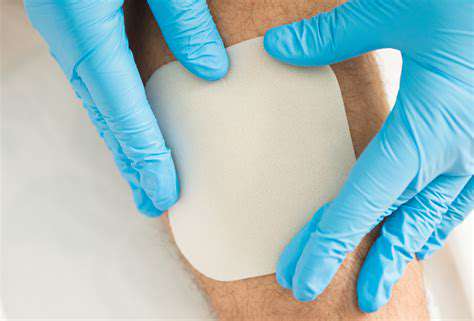How to create a dog first aid kit
Don't forget the tools! A pair of blunt-tipped scissors for trimming bandages and fine-point tweezers for debris removal are invaluable. When cleaning wounds, gentle is the operative word - vigorous scrubbing can do more harm than good. And always monitor healing progress closely, watching for any signs of infection like unusual redness or discharge.
Tools and Equipment
A complete kit isn't just about medicines and bandages - the right tools make all the difference. A digital thermometer (rectal, specifically designed for pets) is essential for monitoring fever or hypothermia. Never skip protective gloves - they protect both you and your pet during treatment. Keep them in multiple sizes to ensure proper fit during delicate procedures.
Multi-tools are a smart addition. Look for kits that combine tweezers, scissors, and possibly even a magnifying glass for examining small injuries. Quality matters here - flimsy tools might fail when you need them most. Store everything in a clearly labeled, waterproof container to keep supplies clean and organized.
External Factors and Protection
True preparedness means thinking beyond the obvious. A comprehensive approach includes items for environmental protection. A compact emergency blanket takes little space but can prevent hypothermia in injured dogs. Always have a sturdy carrier ready - transporting an injured pet safely requires proper equipment, not just your arms.
Documentation is equally crucial. Your kit should contain waterproof copies of vaccination records, medical history, and emergency contacts. Include recent photos of your dog in case they get lost during an emergency. For messy situations, pack sealable biohazard bags - they're useful for containing soiled dressings or collecting samples for the vet.

Addressing Common Dog Injuries and Illnesses
Common Dog Injuries
Active pups will be pups, which means scrapes and sprains come with the territory. Most minor wounds can be handled at home with proper cleaning and bandaging. But here's the critical distinction: superficial cuts versus deep lacerations. The former might need just antiseptic and a bandage, while the latter often requires stitches. When in doubt, err on the side of caution and consult your vet.
Bone and joint injuries demand immediate professional attention. Never attempt to set a fracture yourself - improper handling can compound the damage. Instead, focus on immobilizing the injury and getting to the vet quickly. Watch for telltale signs like abnormal limb angles or refusal to bear weight.
Wound Care
Effective wound management follows a simple mantra: clean, protect, monitor. Start with saline solution or veterinary-approved antiseptic. Patience is key - let the solution do the work rather than vigorous scrubbing. After cleaning, apply a thin layer of antibiotic ointment (pet-safe formulas only) before dressing. Change bandages daily, checking for signs of healing or infection.
Heat Stroke
When temperatures rise, so do risks. Heat stroke is a true emergency - it can kill quickly. Recognize the warning signs: excessive panting, bright red gums, and disorientation. Immediate action is crucial: move to shade, offer small amounts of cool (not cold) water, and use lukewarm compresses on pulse points. Avoid ice baths, as they can cause dangerous temperature fluctuations.
Eye Injuries
Eye issues require delicate handling. For irritants, flush gently with sterile saline. Never rub or apply pressure, and absolutely don't attempt to remove embedded objects yourself. Even minor-looking eye injuries warrant veterinary evaluation - the eye is simply too delicate to risk home treatment.
Gastrointestinal Issues
Tummy troubles range from mild to severe. Monitoring is crucial - note frequency, consistency, and any accompanying symptoms like lethargy. Withhold food for 12-24 hours for vomiting cases, then reintroduce bland diets gradually. But persistent symptoms or blood in vomit/stool means immediate vet attention.
Poisoning
Toxins act fast, so you must too. Keep poison control numbers handy and be ready to provide exact details about the suspected toxin. Never induce vomiting unless specifically instructed - some substances cause more damage coming back up. Time is critical with poisoning cases.
Fractures and Sprains
For suspected breaks, immobilization is the priority. Create a makeshift splint with rolled newspapers or magazines, securing above and below the injury. Avoid putting pressure directly on the suspected fracture. Pain management is important, but only use vet-approved medications.
Tools for Emergency Situations
Essentials for Immediate Action
When seconds count, organization matters. Emergency readiness starts with quick-access essentials. Designate clear compartments for different supplies - one for wound care, another for medications, etc. Include a pet first-aid manual with clear instructions for common scenarios.
Your kit should travel well too. Choose a durable, waterproof bag with multiple pockets that you can grab quickly. Consider keeping mini-versions in your car and travel bags for emergencies away from home.
Wound Care and Cleaning Supplies
Effective wound management requires variety. Stock different bandage sizes and types - self-adhering wraps, non-stick pads, and even butterfly closures for small cuts. Saline solution is the gold standard for initial cleaning, followed by vet-approved antiseptics. Include cotton swabs for precise application and sterile gloves for each treatment.
Pain Management and Comfort
Pain relief requires caution. Only use vet-prescribed medications in exact doses. Include comfort items like a small stress-relief toy or familiar-smelling blanket to reduce anxiety during treatment. A collapsible water bowl and bottled water ensure hydration during emergencies.
Diagnostics and Monitoring
Good care requires good data. Track vital signs methodically - note times, readings, and any administered treatments. Include a pet-specific thermometer and learn normal ranges beforehand. A small notebook stays cleaner than loose paper during messy situations.
Tools for Specific Situations
Prepare for worst-case scenarios. A pet CPR mask takes little space but could save a life. Learn proper restraint techniques - sometimes muzzling is necessary for safety, even with gentle dogs in pain. Include a sturdy blanket that can double as a stretcher for larger dogs.
Storage and Organization
Maintenance ensures readiness. Schedule quarterly kit check-ups to replace expired items and replenish used supplies. Store in a consistent, easily accessible location that all family members know. Consider labeling compartments clearly for stress-free access during actual emergencies.
Storage and Maintenance

Proper Storage for Longevity
Preserving your supplies requires thoughtful storage. Temperature extremes degrade medications - avoid garages or cars where heat fluctuates. Instead, choose a climate-controlled interior closet. For frequently used items, consider a clearly labeled kitchen cabinet that's out of pets' reach.
Environmental Factors Affecting Storage
Moisture is the enemy of medical supplies. Include silica gel packets in your storage container to control humidity. Light can also degrade certain medications - opt for opaque containers rather than clear plastic boxes. Rotate stock regularly to use older items first.
Temperature Control and Humidity Management
Some items need special care. Certain medications require refrigeration - know which ones and store properly. For other supplies, consistent room temperature is ideal. In humid climates, vacuum-sealing extra supplies can prevent moisture damage during storage.
Pest Control and Protection
Rodents love to chew through supplies. Metal containers provide the best protection against determined pests. Avoid cardboard boxes that can attract insects. Regularly inspect for signs of infestation, especially if storing in basements or garages.
Cleaning and Organization for Efficiency
A messy kit wastes precious time. Implement a logical organization system - group similar items together in clear pouches. Include an inventory checklist on the inside lid for quick verification. After each use, disinfect the container and restock immediately.
Specific Storage Techniques and Materials
Tailor your approach. Medications often need original containers with legible labels. Bandages stay sterile longest in individual wrappers. Liquid antiseptics should have secure, leak-proof caps. Consider compartmentalized bags within your main kit for better organization.